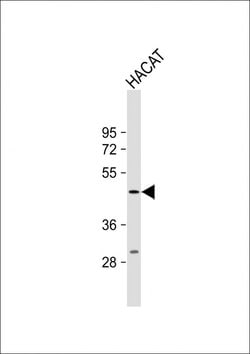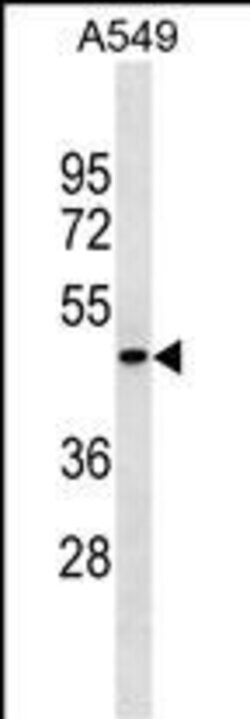Promotional price valid on web orders only. Your contract pricing may differ. Interested in signing up for a dedicated account number?
Learn More
Learn More
Invitrogen™ PGRP-1b Polyclonal Antibody
Rabbit Polyclonal Antibody
Supplier: Invitrogen™ PA5116290
Description
PGRP-1b Polyclonal Antibody for Western Blot
The primary immune recognition is based on structures common among invading pathogens. Bacterial surface molecules, such as lipopolysaccharide (LPS) and peptidoglycan (PGN), are known to elicit immune reactions ranging from cytokine release to fever. Recently, a family of proteins called peptidoglycan recognition protein (PGRP) has been identified in mouse and human that binds to peptidoglycans expressed on Gram-positive bacteria. Peptidoglycan (PGN) is an essential cell wall component of virtually all bacteria (1, 2) and, thus, it is an excellent target for recognition by the eukaryotic innate immune system. The PGRPs (PGRP-L, PGRP-S, PGRP-Ia, and PGRP-I beta) define a new family of human pattern recognition molecules (3). PGRP-L is primarily expressed in the liver. Although liver is not considered a primary immune organ, liver participates in host defenses by producing acute phase proteins (by hepatocytes) in response to infections and by clearing microorganisms from blood (4-5).
Specifications
| PGRP-1b | |
| Polyclonal | |
| PBS with 0.09% sodium azide; pH 7.4 | |
| Q96LB8 | |
| PGLYRP4 | |
| KLH conjugated synthetic peptide between 242-268 amino acids from the Central region of human PGLYRP4. | |
| 400 μL | |
| Primary | |
| Human | |
| Antibody | |
| IgG |
| Western Blot | |
| Unconjugated | |
| PGLYRP4 | |
| Gm1478; Gm413; Peptidoglycan recognition protein 4; peptidoglycan recognition protein I beta; peptidoglycan recognition protein I-beta; Peptidoglycan recognition protein intermediate beta; peptidoglycan recognition protein-I-beta; PGLYRP4; PGLYRPIbeta; PGRPIB; PGRP-Ibeta; PGRP-I-beta; SBBI67 | |
| Rabbit | |
| Antigen Affinity Chromatography, Protein A | |
| RUO | |
| 57115 | |
| Store at 4°C short term. For long term storage, store at -20°C, avoiding freeze/thaw cycles. | |
| Liquid |
Product Content Correction
Your input is important to us. Please complete this form to provide feedback related to the content on this product.
Product Title
Spot an opportunity for improvement?Share a Content Correction

